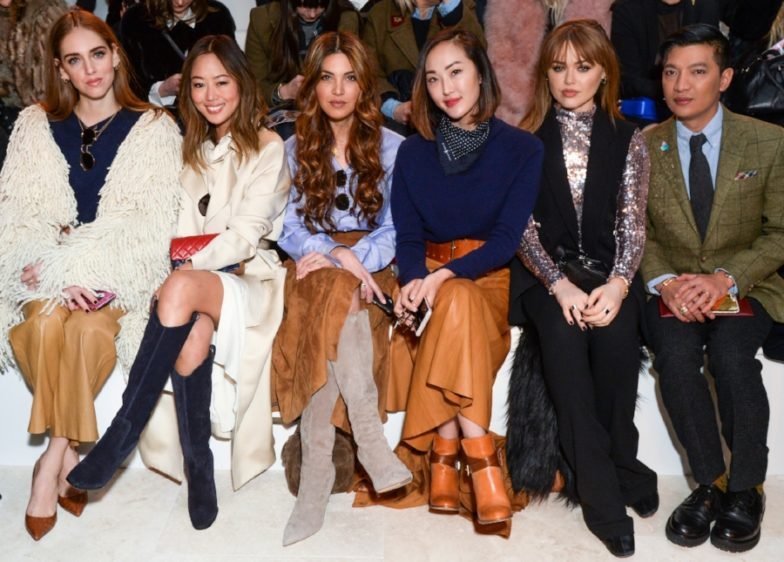Beneath the neon-lit installations of Dior’s latest collection on Fifth Avenue lies a meticulously engineered commercial logic. As Gen Z dominates consumer markets and social media rewires aesthetic hierarchies, the fashion industry is undergoing its most radical transformation yet. How do heritage brands, once synonymous with timeless elegance, reinvent their survival strategies amid algorithmic chaos and environmental activism? This is not merely a business challenge but a battle for cultural relevance in a fractured world.
1. Digital Natives’ Mirror Game: Reconstructing the Runway in the Age of Information Flow
When Balenciaga staged its show within the dystopian video game Afterworld: The Age of Tomorrow and Gucci launched a virtual boutique on Roblox, they weren’t just chasing trends—they were redefining the physics of consumer attention. Like Marriott’s battle with Airbnb over experiential storytelling, luxury brands now compete in a landscape where storefronts have morphed into Instagram grids and TikTok clips.
For digital natives, brand perception is a mosaic of micro-moments. This demands a “hive-mind content strategy”: standalone yet interconnected touchpoints that coalesce into a coherent narrative. Fendi’s live-streamed craftsmanship sessions on TikTok, dissecting the creation of its Peekaboo bags, transformed artisanal heritage into viral social currency. The approach mirrors Peloton’s genius in embedding its bikes into And Just Like That…—a masterclass in rebranding nostalgia for the algorithmic age.
2. Cultural Alchemy: Anchoring Legacy in the Tide of Change

New York’s century-old Katz’s Deli survives not through stubborn tradition but by reinventing its iconic pastrami sandwich for plant-based generations. This principle of dynamic preservation defines modern fashion resilience. At Saint Laurent, Anthony Vaccarello’s designs pay homage to the androgynous sharpness of the 1966 Le Smoking suit while dissolving gender binaries—transforming archival DNA into living cultural commentary rather than museum relics.
True brand endurance reveals itself in crisis navigation. The American Cancer Society’s near-collapse from outdated fundraising models offers a cautionary tale: In an era where Vestiaire Collective’s resale empire rivals traditional luxury, craftsmanship alone no longer suffices. Prada’s Re-Nylon initiative exemplifies the new imperative—it didn’t stop at creating recycled fabric but engineered a closed-loop ecosystem, turning sustainability into a tangible ritual. Here, ethical commitment becomes experiential, not just ideological.
3. Neuroeconomics Unpacked: Inside Gen Z’s Decision Matrix
Cambridge research on cognitive aging reveals a dual-system paradox in young consumers: instantaneous logo recognition clashes with deliberate value assessment. Brands exploiting this cognitive friction are rewriting engagement rules. Diesel’s “anti-perfectionism” campaign featuring unretouched models weaponizes cognitive dissonance, while Bottega Veneta’s social media purge engineered scarcity in an oversaturated digital world.

The neuroscience of consumption suggests that simplicity cuts through noise. Uniqlo’s LifeWear philosophy thrives by distilling technical innovation into the sensory promise of “clothing for life”—a cognitive shortcut mirroring older adults’ compensatory attention strategies. In an age of decision fatigue, clarity becomes currency.
4. Agile Evolution: Building Antifragile Ecosystems
Ford’s autonomous vehicle breakthrough wasn’t about superior engineering but organizational metamorphosis. Similarly, Zara’s parent company Inditex compresses design-to-rack cycles to 15 days through a “bio-organizational structure”—stores act as neural sensors, headquarters as synaptic hubs. This living organism outpaces any trend forecaster.
Pandemic stress-tests proved agility’s worth. When Canada Goose pivoted from parkas to medical gowns using Antarctic expedition tech, it didn’t just adapt—it reforged its brand narrative. Such strategic plasticity validates the Shift Ahead principle: Early-warning systems trump reaction plans.
The New Eternal: Fashion as Cultural Operating System

As 2025 approaches, fashion’s metamorphosis from “status symbol factory” to “cultural OS” accelerates. The survivors understand: Sustainability isn’t about chasing trends but encoding zeitgeist into brand DNA. Like cells renewing through metabolism, true longevity lies in perpetual reinvention—where products transcend utility to become belief systems. In this dance of dynamism and preservation, fashion discovers its paradoxical eternity: forever changing, yet eternally resonant.



